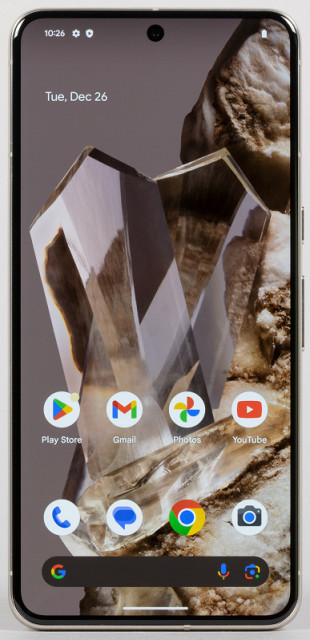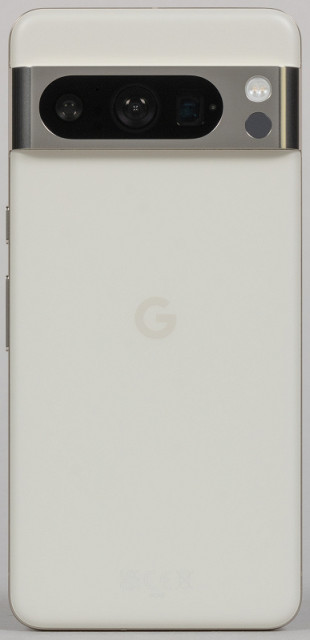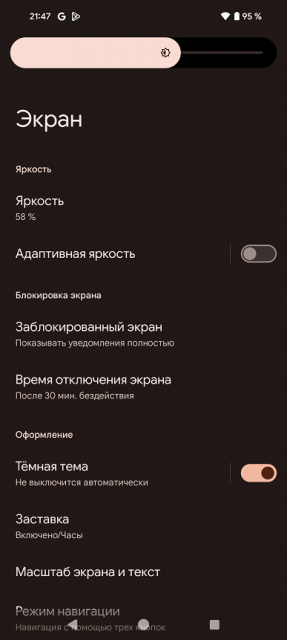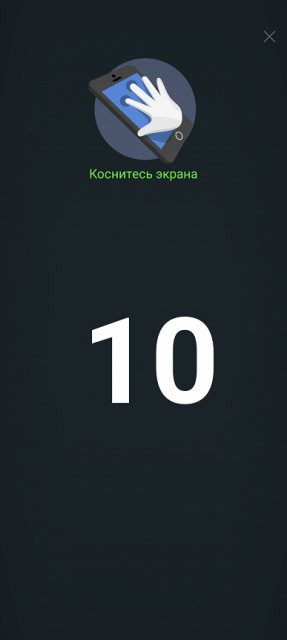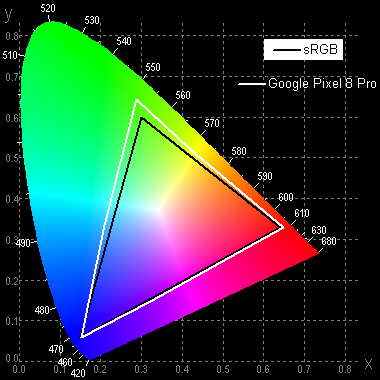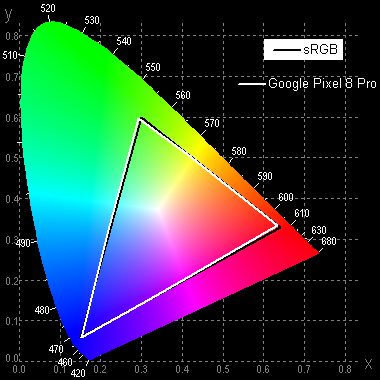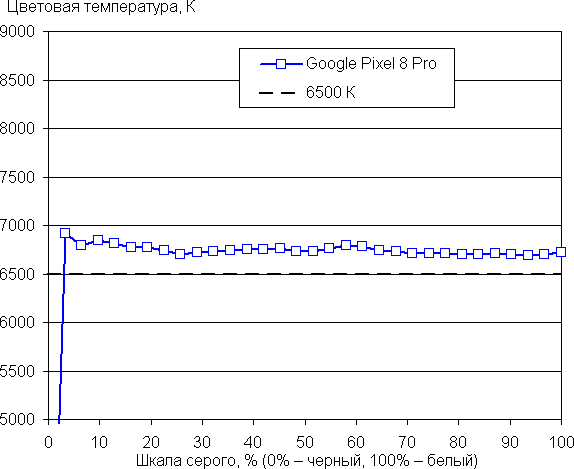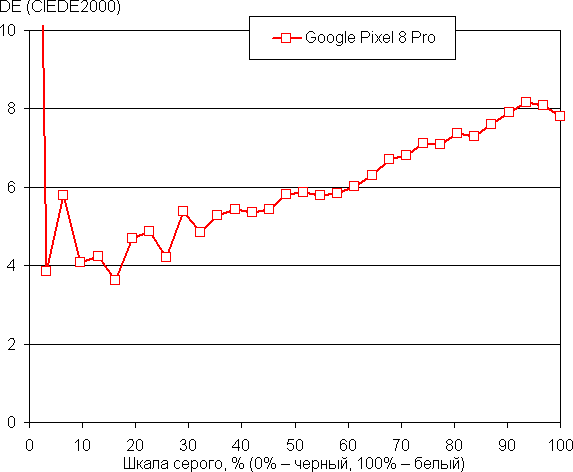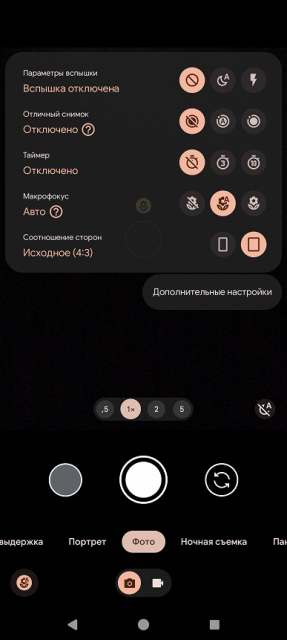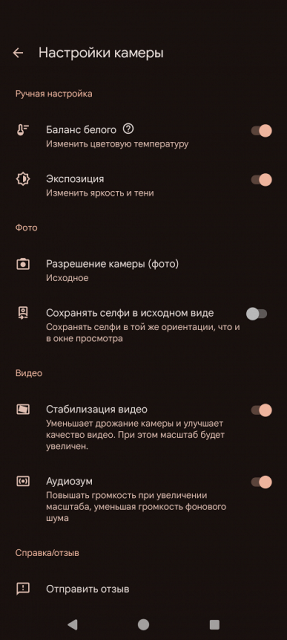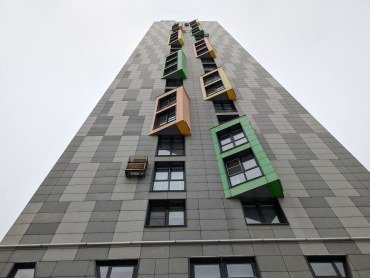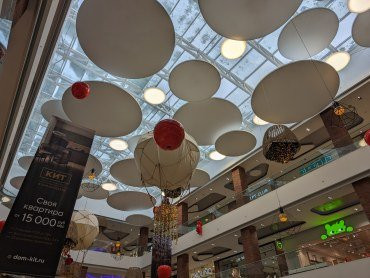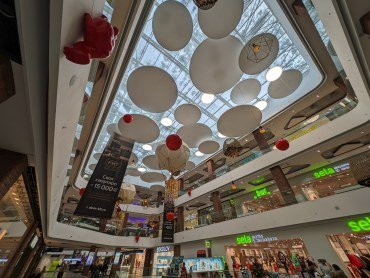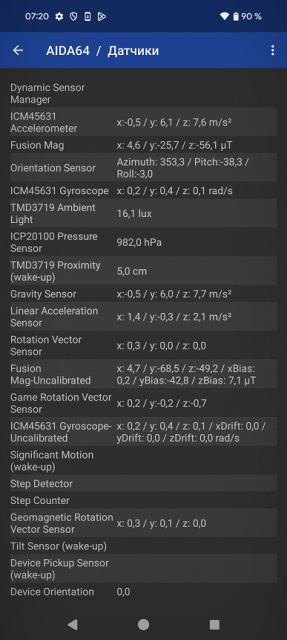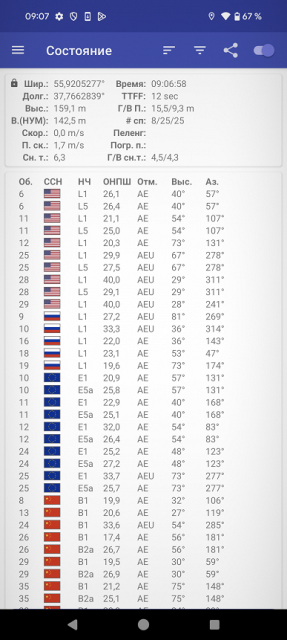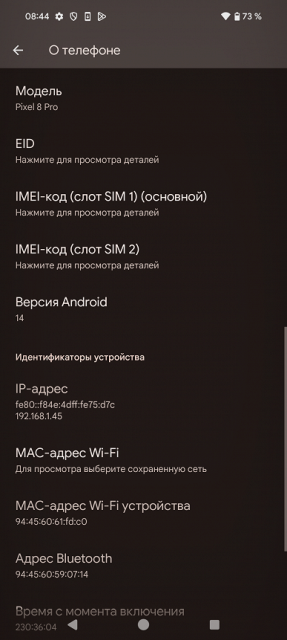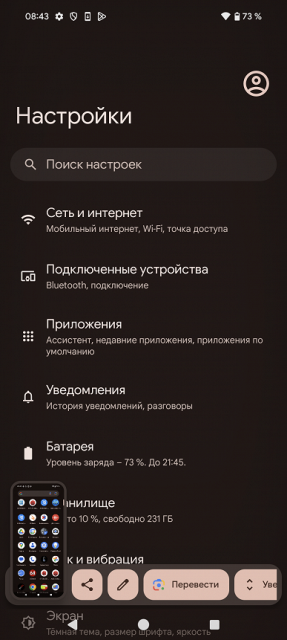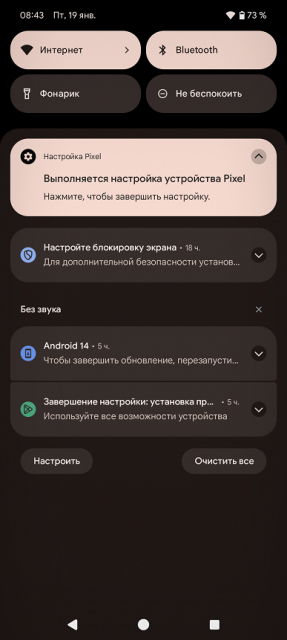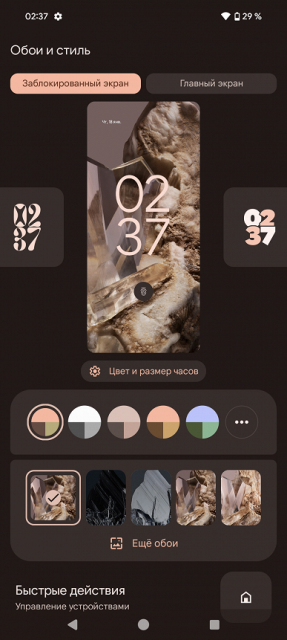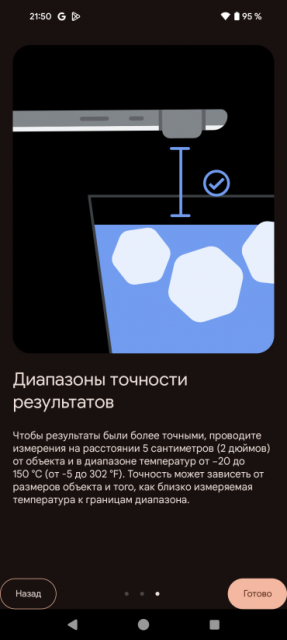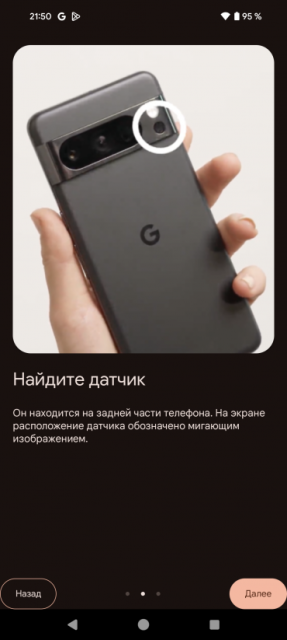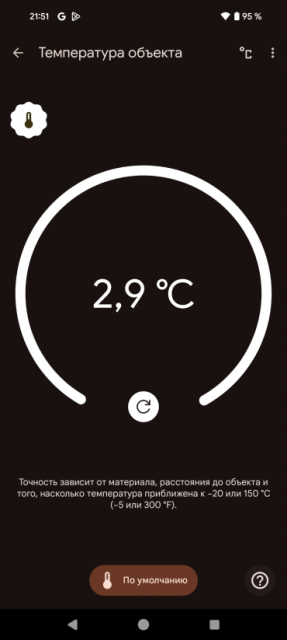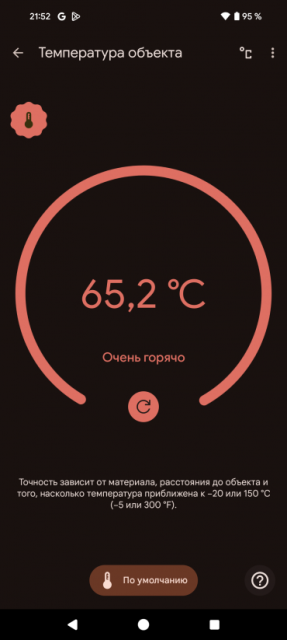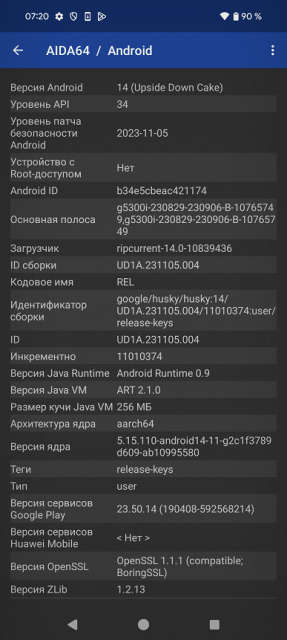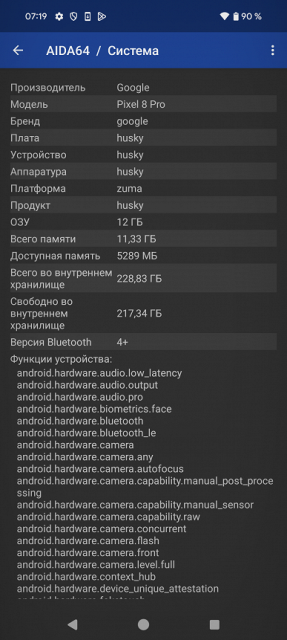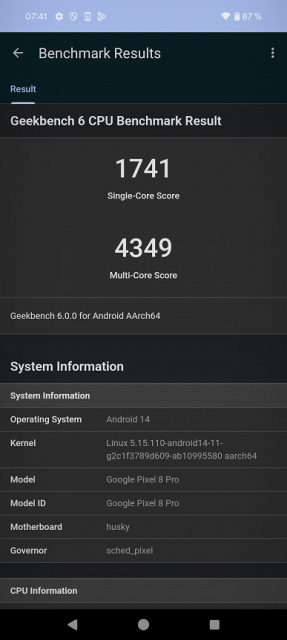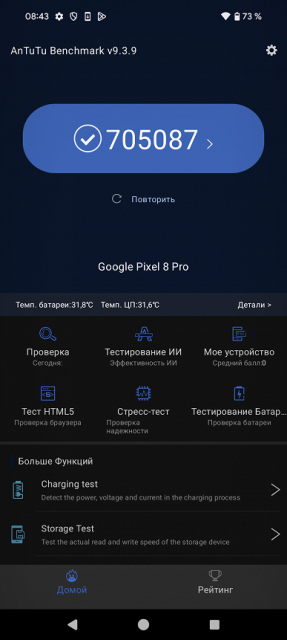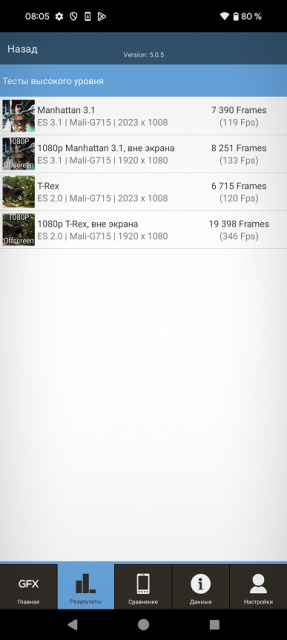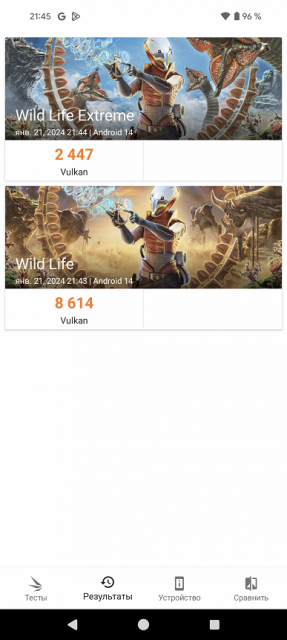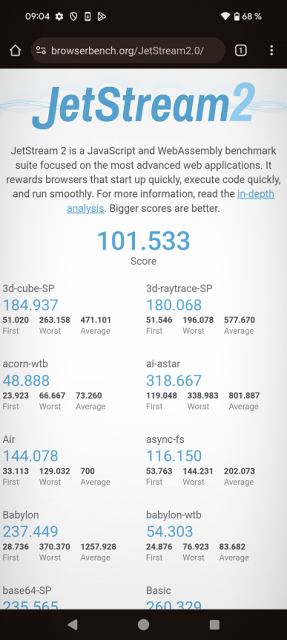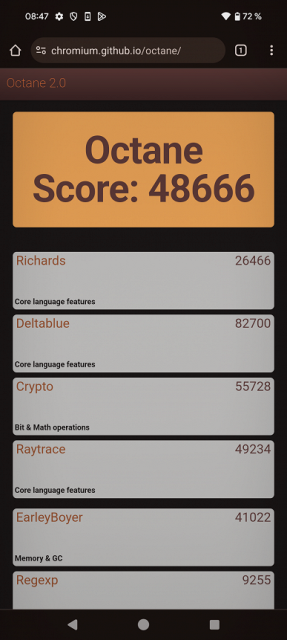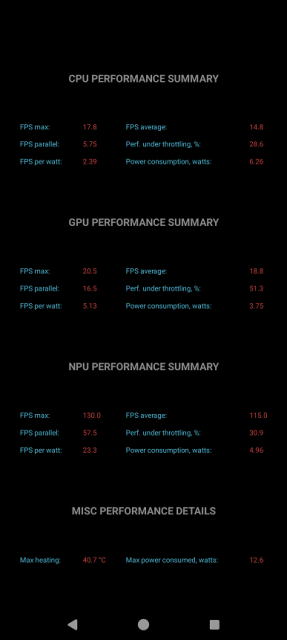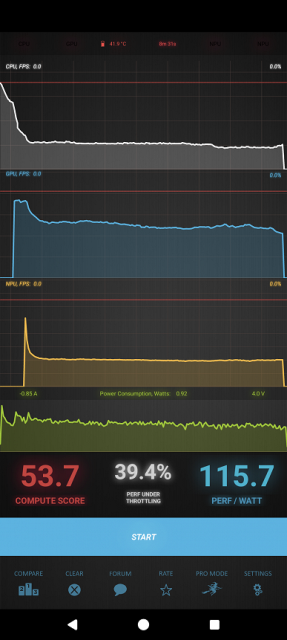The Pixel 8 Pro is the flagship model in Google's current range of smartphones. The new flagship has undergone many changes compared to the previous one: there is a completely new proprietary 9-core processor, support for Wi-Fi 7, an updated design, and improved cameras with artificial intelligence.
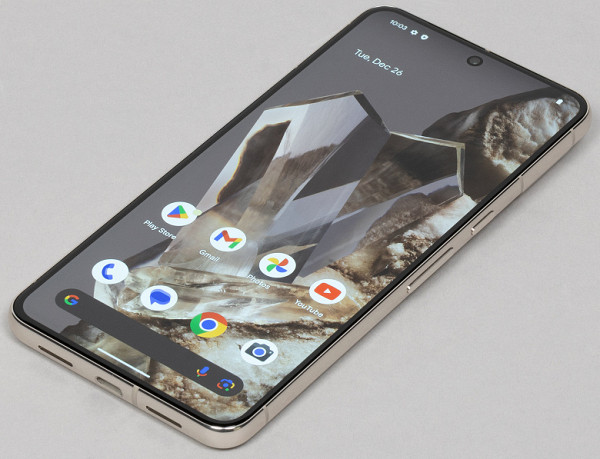
Google Pixel 8 Pro Key Features
- Google Tensor G3 SoC, 9 processor cores (1×Cortex-X3 @3.0 GHz + 4×Cortex-A715 @2.45 GHz + 4×Cortex-A510 @2.15 GHz)
- GPU Immortalis-G715s MC10
- Operating system Android 14
- Touch display Super AMOLED, 6.7″, 1344×2992, 20:9, 489 ppi, 120 Hz, Corning Gorilla Glass Victus 2
- RAM 12 GB LPDDR5X, internal memory 128/256/512 GB/1 TB UFS 3.1
- No microSD support
- Support Nano-SIM (1 pcs.) + e-SIM
- Networks 2G GSM, 3G WCDMA, 4G LTE, 5G
- GPS (L1+L5), Glonass (G1), Galileo (E1+E5a), QZSS (L1+L5)
- WiFi 7
- Bluetooth 5.3, A2DP, LE, aptX HD
- NFC
- USB 3.0 Type-C, USB OTG
- No 3.5mm audio output
- Rear cameras 50 MP + 48 MP (telephoto) + 48 MP (wide-angle), video 4K@60 fps, gyro-EIS
- Front camera 10.5 MP
- Proximity and lighting sensors, magnetic field, accelerometer, gyroscope, barometer, thermometer
- Fingerprint scanner (under-screen, optical)
- Stereo speakers
- Protection degree IP68
- 5050 mAh battery, 30 W charging (PD 3.0), 23 W wireless charging
- Dimensions 163×77×8.8 mm
- Weight 213 g
Appearance and ease of use
Google Pixel 8 Pro comes in a compact and durable box with a minimalist design. The kit does not include a charger; Only one cable is provided for connection. Also, the kit does not include a case.
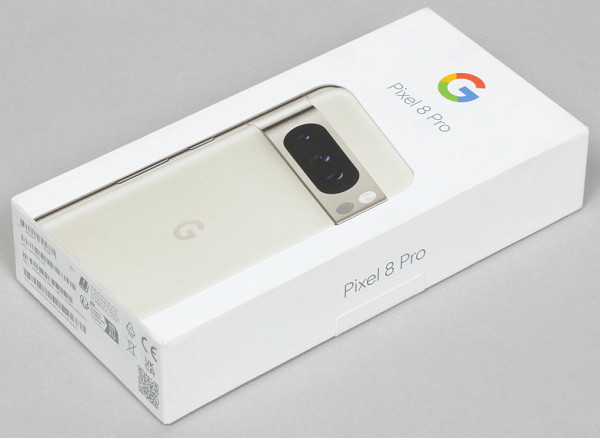
Google Pixel 8 Pro has received improvements over the previous generation, especially noticeable in its appearance. The main improvement is replacing the shiny finish with a matte finish that is pleasant to the touch and less prone to fingerprints. While the smaller Pixel 8 unfortunately retains its glossy finish.
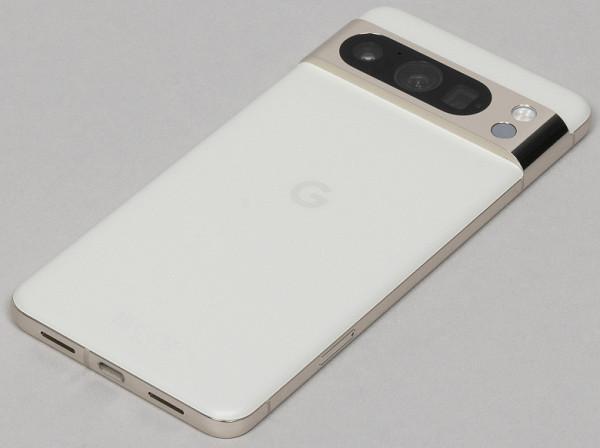
Both the front and back of the Google Pixel 8 Pro are equipped with the latest generation of high-strength glass — Corning Gorilla Glass Victus 2, which provides excellent protection against impacts and scratches. Also a significant improvement is the move to a flat screen, which does away with slippery and reflective edges.

The side frame of the smartphone is thick and durable, made of genuine chrome plated metal. This gives the device a solid feel and fits comfortably in the hand thanks to its wide but slightly rounded and convex edges.

Given its considerable size and weight, the Google Pixel 8 Pro definitely falls into the category of large and heavy smartphones that may not be suitable for all users. However, the manufacturer has cleverly provided an alternative in the form of the standard Google Pixel 8 model, which is more compact in size and lighter, providing a choice for different preferences.
Due to the durable metal strip that extends across the entire width of the back and frame the camera, the device is stable on any flat surface and does not wobble when interacting with the screen. This design element definitely stands out as unique and although it may seem unusual, it is certainly a unique feature not found in other manufacturers.

Unfortunately, the placement of the side buttons is once again surprising as they are placed in an unconventional manner, with the power button at the top and the volume buttons at the bottom, which is a departure from the usual layout of most smartphones. This can be confusing when you first start using it.
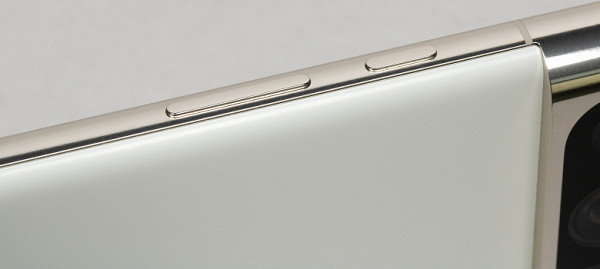
The fingerprint scanner built under the screen is located slightly higher than usual, making it easier for the developers to use it with one hand, eliminating the need to support the device with the other hand when unlocking. The scanner response may not be the fastest, requiring a slight pause when touching, but this contributes to recognition accuracy and reduces the number of false positives.
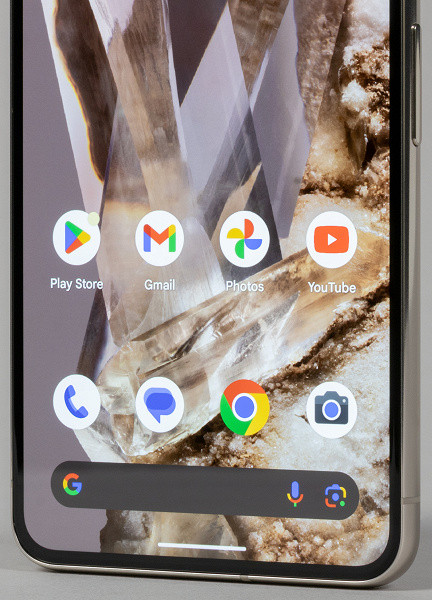
The front camera is single, it is traditionally installed behind a round cutout in the screen matrix. Here this cutout is not located in the corner, but right in the center of the top edge of the screen.
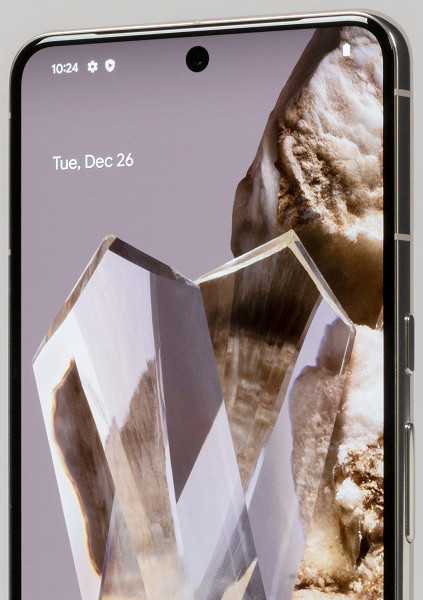
The slide-out tray on the left side can accommodate only one Nano-SIM card. If you need more, you can use virtual e-SIM. There is no room at all for a microSD memory card.
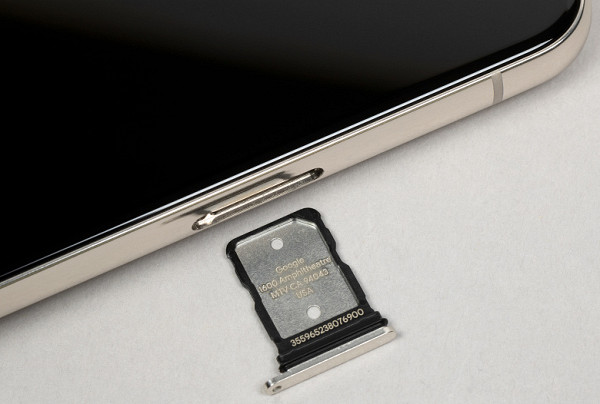
At the bottom there is a speaker, a microphone and a USB Type-C connector. There is no 3.5 mm audio output for the minijack of wired headphones.

There is only an additional microphone installed on the top end. The oval insert is a 5G module.

The smartphone is equipped with dust and moisture protection according to the IP68 standard, which means it can withstand immersion in fresh water to a depth of 1.5 meters for one and a half hours. The case is offered in three color options: blue, black and white, the latter of which is more of a creamy, ivory-like shade.
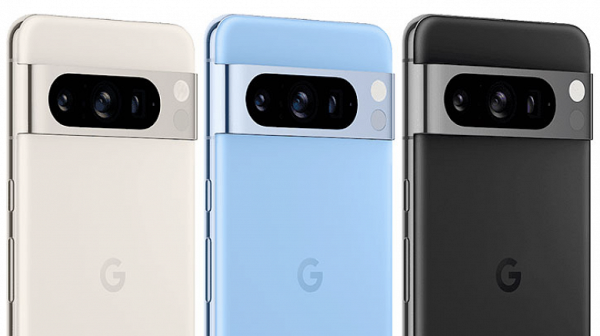
Screen
The Google Pixel 8 Pro smartphone is equipped with a 6.7-inch AMOLED display with a resolution of 1344×2992, protected by the latest generation flat glass — Corning Gorilla Glass Victus 2. The pixel density is 489 ppi. The width of the frame around the screen is about 4 mm on each side. The display supports a dynamic refresh rate of up to 120Hz, HDR10+ and up to 10 rollover points.
The front surface of the Google Pixel 8 Pro screen is made of glass with a smooth, mirror-like surface that is scratch-resistant. The screen has better anti-glare properties compared to the Nexus 7. A special oleophobic coating reduces fingerprints and their appearance. The maximum screen brightness with manual control reaches about 950 cd/m², in HDR mode — up to 1500 cd/m². There is automatic brightness adjustment depending on lighting conditions, ensuring comfortable reading in various conditions.
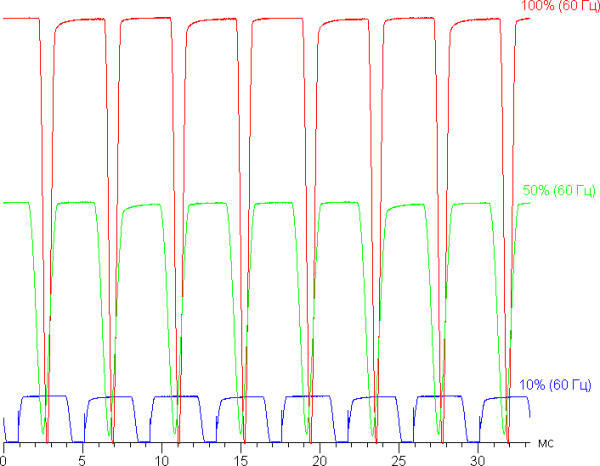
At low and medium screen brightness on the Google Pixel 8 Pro, there is little modulation, which eliminates noticeable flicker. However, when brightness is reduced significantly, high modulation may occur, which may be noticeable during rapid eye movement or strobe testing. This may cause fatigue for some users, but the modulation frequency is high and differences in modulation phase across the screen reduce the negative impact. In the screen settings there is an option to increase the refresh rate to 120 Hz.
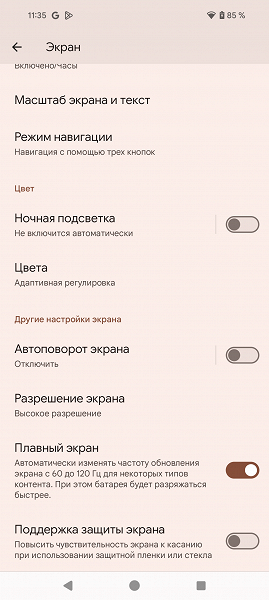
At low and medium screen brightness on the Google Pixel 8 Pro, there is little modulation, which eliminates noticeable flicker. However, when brightness is reduced significantly, high modulation may occur, which may be noticeable during rapid eye movement or strobe testing. This may cause fatigue for some users, but the modulation frequency is high and differences in modulation phase across the screen reduce the negative impact. In the screen settings there is an option to increase the refresh rate to 120 Hz.
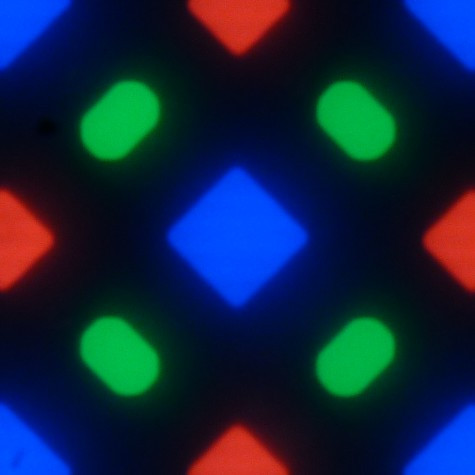
In the image above you can see that the matrix consists of 4 green subpixels, 2 red (4 halves) and 2 blue (1 whole and 4 quarters). This layout, called PenTile RGBG, allows you to lay out the entire screen without tearing or overlap, and Samsung uses it for its screens. Screen resolution is calculated based on green subpixels, which means it will be lower for the other two colors.
The viewing angles on this screen are excellent. The brightness does drop slightly when viewed from an angle, but not as much as the Nexus 7 screen. This makes the smartphone screen visually brighter, especially when viewed from a shallow angle. Whites may take on a slight bluish tint at high angles, but blacks remain deep black. Contrast is not applicable in this case due to the deep blacks.
For comparison, photographs are shown in which the screens of a smartphone and another device show the same images at approximately the same brightness of 200 cd/m² and white balance of 6500 K.
Version for conversational interface:
It can be seen that the smartphone’s screen is brighter, and the black color remains deep even when the device is tilted.
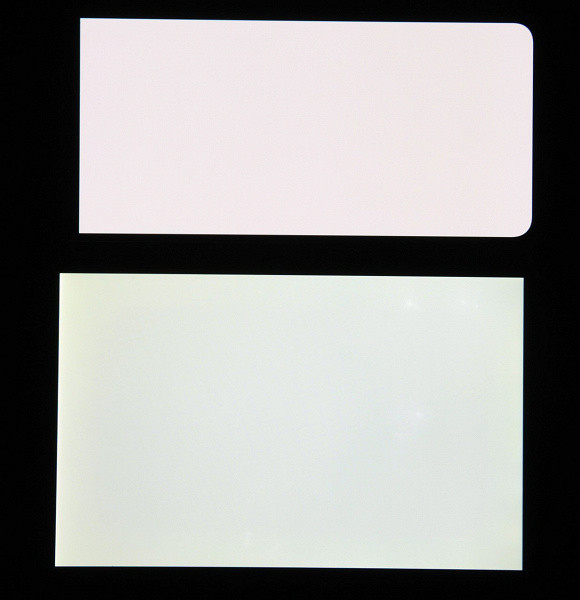
Note the good uniformity of brightness and color tone of the white field.
And a test picture (profile Natural [colors]):

On-screen color reproduction is good, with rich colors and minor differences in color balance between screens. It is important to remember that photographs do not always accurately convey color quality and are used for illustrative purposes only. For example, the reddish tint that may be noticeable in smartphone photos is not always visible visually due to the spectral sensitivity of the camera, which differs from human vision.
The photo was taken with the «Natural Colors» profile active in the screen settings. There are two profiles available.
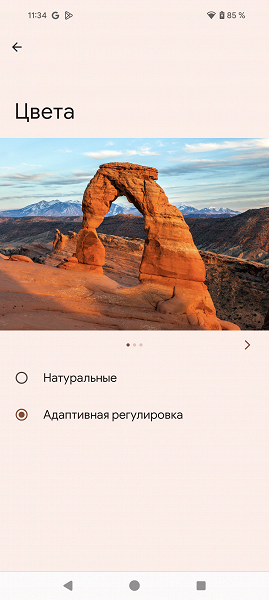
The Adaptive Adjustment profile (selected by default) has slightly increased color saturation:

Switching the state of the matrix elements occurs almost instantly, however, when moving from black to white, a step with a width of approximately 17 ms (at a screen refresh rate of about 60 Hz) or approximately 8 ms (at a refresh rate of 120 Hz) can be observed. Such changes are visible in graphs of brightness versus time.
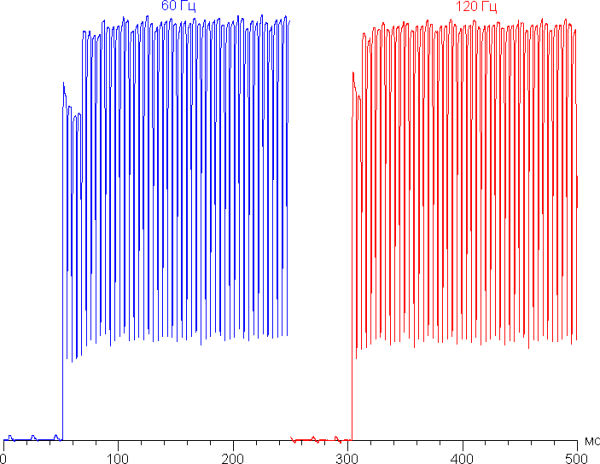
Under certain conditions, the presence of such a step can cause the effect of “trails” that trail behind moving objects.
The gamma curve, based on 32 points at equal intervals in shades of gray, does not show significant deviations in either highlights or shadows. The exponent of the approximating power function is 2.21, which is close to the standard value of 2.2. The real gamma curve deviates little from the power-law dependence.
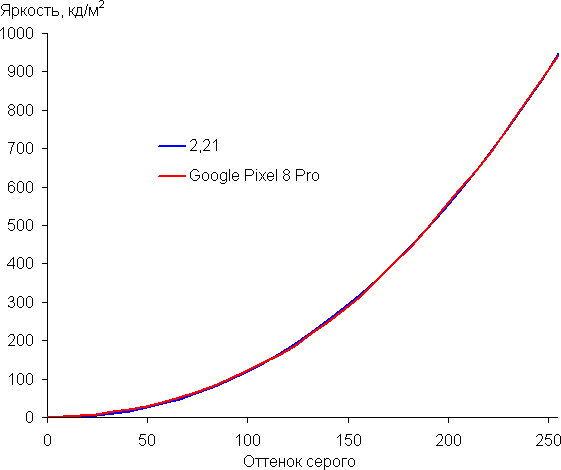
Recall that for OLED screens, the brightness of parts of the image can change dynamically depending on the nature of the output content, which leads to a slight decrease in brightness for overall bright images. This means that the gamma curve produced by sequentially displaying grayscale across almost the entire screen is likely to be different from the gamma curve of a static image.
The color gamut for the Adaptive Adjustment profile is slightly wider than sRGB, and for the Natural profile it is closer to sRGB.
Let's look at the spectra (Natural profile):
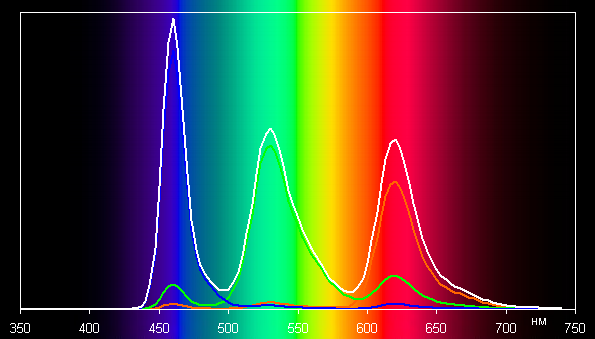
Such spectra are typical for OLED matrices, where the components are well separated, which provides a wide color gamut. In this case, the color gamut has been carefully adjusted to match the sRGB boundaries, which visually gives natural color saturation.
These results were obtained when displaying images in the Google Chrome browser. In Google Photos and when using images with the Display P3 profile, we found that the color gamut becomes wider than sRGB and closer to DCI-P3.
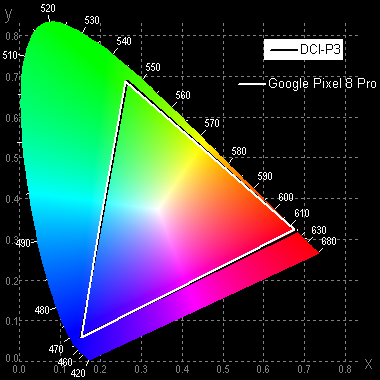
Let's look at the spectra in the case of test images in this case:
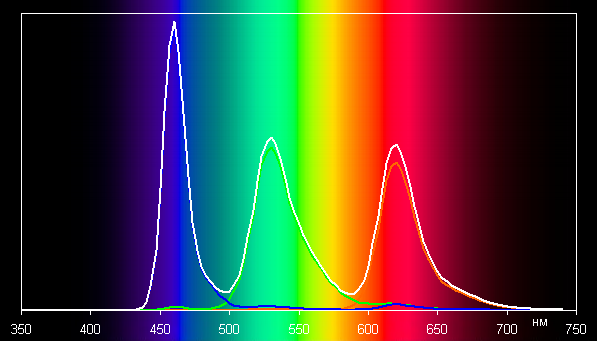
In this case, we see a slight cross-mixing of components, which means that the screen's native color space is slightly wider than DCI-P3.
The grayscale balance is very good, as the color temperature is close to the standard 6500 K, and the deviation from the blackbody spectrum (ΔE) is below 10, which is a good indicator for a consumer device. At the same time, color temperature and ΔE practically do not change from shade to shade, which has a positive effect on the visual perception of color balance.
Of course, there is a function to reduce the intensity of the blue component:
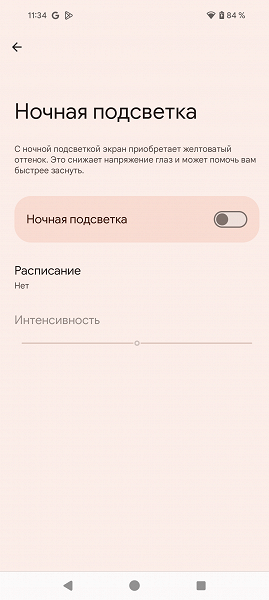
The description of the Night Light mode contains both misinformation regarding eye strain and true information about the effect of bright light on the circadian rhythm. However, this can be solved by simply reducing the brightness to a comfortable level without distorting the color balance by reducing the contribution of blue.
This device probably does not support DisplayPort Alt Mode for USB Type-C, which eliminates the possibility of outputting image and sound to an external device when connected to a USB port.
The final conclusions about the screen are as follows: it has a very high maximum brightness (up to 1500 cd/m²) and excellent anti-glare properties, which allows you to use the device even in bright sunlight. In the dark, the brightness can be reduced to a comfortable level (1.9 cd/m²). Automatic brightness adjustment works adequately. Screen benefits also include an effective oleophobic coating, high resolution, support for sRGB and DCI-P3 color gamuts (including Google Photos), good color balance and dynamic refresh rate adjustment up to 120 Hz. Disadvantages include screen flickering, which can cause fatigue for particularly sensitive users. However, overall the screen quality is rated as very high.
Camera
The Google Pixel 8 Pro smartphone has three main rear cameras: main, telephoto and wide-angle. All three cameras support autofocus, although the wide-angle one does not have optical image stabilization.
Camera characteristics:
- Main camera: 50 MP, 1/1.31″, 1.2 µm, f/1.7, 25 mm, dual pixel PDAF, multi-zone Laser AF, OIS.
- Telephoto camera: 48 MP, 1/2.55″, 0.7 µm, f/2.8, 113 mm, dual pixel PDAF, OIS, 5× optical zoom.
- Wide-angle camera: 48 MP, 0.8 µm, f/2.0, 126°, dual pixel PDAF.
The main camera with a 50 megapixel sensor works in pixel binning mode by default, creating pictures in a resolution of 12.5 megapixels. The quality of shooting, even at a maximum resolution of 50 MP, remains the highest: high detail, clear image without noise, artifacts or distortion. This is a truly impressive camera that allows you to choose between two shooting modes. Shooting at 12.5 MP is recommended for reducing the size of photos, while shooting at full resolution is preferable for those who plan on further manual processing in a photo editor or need more detail. Pixel Camera's AI-powered algorithms can transform photos to give them a distinctive character, making this camera a go-to for both professionals and those who prefer simplicity and ease-of-use.
Even in the low light conditions of winter Moscow, the smartphone demonstrated the highest quality of shooting with the main camera, providing a wide dynamic range, maximum detail, smooth geometry and natural color rendition. This photographic flagship is without a doubt one of the best on the world market at the moment, and in our opinion, even the best of all currently available. This quality of photo processing has no analogues.
In night mode, the automation adds a little more saturation to the colors, making the pictures even more attractive, which is completely justified in this context. Thanks to excellent sharpness and high detail, night photos look just as impressive as daytime ones.

The wide-angle module maintains full color matching with the main camera, and the detail in the center of the frame is excellent (for a wide-angle camera), but there is blur at the edges and especially in the corners of the frame — this is a natural phenomenon that cannot simply be combated using optics.
The macro photography function is also assigned to the wide-angle module, which is the right decision. Thanks to the presence of autofocus, there are no problems with focusing at close range. High clarity and detail make such pictures quite impressive.
A separate module with a long-focus lens implements a 5× optical zoom, equipped with phase detection autofocus and an optical stabilizer. It is also capable of shooting in both pixel binning and full resolution modes. The quality in terms of detail and clarity is the highest, making all three cameras on Google’s flagship not just “not stubs,” but practically the best in their class.
The viewfinder screen also displays the intermediate focal length for the 2× zoom. Apparently, this is a cropped frame from the central part of the 50-megapixel image, but it is quite difficult to distinguish — all cameras provide the highest quality shooting. The result looks like this:
In the field of video shooting, Google Pixel 8 Pro is considered one of the best mobile devices on the market. Its capabilities can only be rivaled by the Apple iPhone 15 Pro Max. The smartphone is capable of recording video in 4K format at frame rates of 60 or 30 frames per second. The image has perfect detail, and excellent stabilization makes the video smooth, even when shooting on the go. There is not even the slightest flicker.
The smoothness of the image is achieved thanks to digital stabilization using the built-in gyroscope — gyro-EIS. Video quality is high in terms of detail and dynamic range, but color reproduction can be a little artificial. The sound is recorded with high quality.
The front camera, the only one of its kind (10.5 MP, 1/3.1″, 1.22 µm, f/2.2, 20 mm, PDAF), offers two “focal lengths” — general and close. This is achieved by cropping the central part of the picture. Like other cameras, it provides high quality shooting: maximum detail, no distortion and uniform background blur. However, the work of artificial intelligence in the field of portrait processing can sometimes be imperfect — this is perhaps the only remark.
Telephone and communications
The Google Pixel 8 Pro smartphone is fully compatible with mobile networks, including 5G support. In the urban area of the Moscow region, it demonstrated stable operation in wireless networks, without losing connection and quickly restoring it after a break. The device also features the latest wireless adapter that supports tri-band Wi-Fi 7, as well as Bluetooth 5.3 and NFC. There is e-SIM support.
The satellite navigation module works with GPS (L1+L5), Glonass (G1), Galileo (E1+E5a) and QZSS (L1+L5). Satellites are quickly detected during a cold start, and positioning accuracy is high.
The voice of the interlocutor in the speaker is clear, with good volume. The vibration motor is pleasantly felt. Built-in sensors, including a gyroscope, are also present in the complete set, and there is even a built-in barometer and thermometer.
Software and multimedia
The Google Pixel 8 Pro smartphone runs on the latest version of the pure Android operating system without any additional shells. Users can enjoy full support for Google services and the Google Play Store. Google Pixel devices are always the first to receive Android operating system updates and continue to receive them longer than other manufacturers' devices. Updates are provided for 7 years, which is a significant advantage compared to other mobile devices.
The interface of the Google Pixel 8 Pro smartphone is highly optimized, ensuring smooth and fast operation. Users have access to all the customization features they need, including the ability to use gestures or the classic bottom buttons for control. In the “pure” version of Android, the curtain is combined into one single telescopic area, rather than divided into two parts depending on where it is pulled. The new version adds even more options for customizing the appearance: users can program widgets and wallpapers so that they automatically respond to the time of day and weather conditions, adapting to them. Much attention is paid to the operation of functions based on artificial intelligence, but currently their use in Russia is limited.
But there are also utilities that will function anywhere. For example, the smartphone has a built-in thermometer and can measure temperature, which can be useful in everyday life.
The Google Pixel 8 Pro smartphone has powerful stereo speakers that provide high-quality and surround sound. There are no complaints about the audio aspect. Bluetooth 5.3 and all current profiles for wireless headphones, such as aptX, aptX HD and LDAC, are supported. However, there is no audio output for connecting quality wired headphones, which is a minor drawback.
Performance
The Google Pixel 8 Pro smartphone runs on the Google Tensor G3 processor, which includes 9 cores (1×Cortex-X3 @3.0 GHz + 4×Cortex-A715 @2.45 GHz + 4×Cortex-A510 @2.15 GHz) and GPU Immortalis-G715s MC10. The RAM capacity is 12 GB LPDDR5X, and the internal memory can be 128, 256, 512 GB or 1 TB according to the UFS 3.1 standard. Unfortunately, the use of a microSD memory card is not provided. However, the smartphone supports connecting external devices via the USB Type-C port in USB OTG mode.
Although the platform is equipped with advanced technologies and is made using a 4 nm process technology, the results of synthetic tests such as AnTuTu are not record-breaking and amount to more than 700 thousand points. However, in practice, the device has enough power to run the interface smoothly and run complex games at high graphics settings. The graphics adapter also supports the Vulkan API, providing optimal visual quality in games.
Testing in comprehensive tests AnTuTu and GeekBench:
All results obtained when testing the smartphone in the latest versions of popular benchmarks were summarized in tables for easy comparison. Typically, the table also includes results from other devices from different market segments that were tested on similar versions of the benchmarks. This allows you to clearly evaluate the results obtained. However, due to the limitations of comparative analysis, it is not possible to include all worthy and current models in one comparison, since they may have been tested on previous versions of the test programs.
| Google Pixel 8 Pro (Google Tensor G3) | Samsung Galaxy S23 Ultra (Qualcomm Snapdragon 8 Gen2) | Honor Magic V2 (Qualcomm Snapdragon 8 Gen2) | Huawei Mate X3 (Qualcomm Snapdragon 8+ Gen1) | Honor 90 (Qualcomm Snapdragon 7 Gen1 AE) | |
|---|---|---|---|---|---|
| AnTuTu (v9.x) (bigger is better) | 705087 | 1180538 | 974851 | 1052648 | 605365 |
| GeekBench 6 (bigger is better) | 1741/4349 | 1880/4912 | 1327/3200 | 1753/4296 | 1071/3111 |
Testing the graphics subsystem in 3DMark and GFXBenchmark gaming tests:
| Google Pixel 8 Pro (Google Tensor G3) | Samsung Galaxy S23 Ultra (Qualcomm Snapdragon 8 Gen2) | Honor Magic V2 (Qualcomm Snapdragon 8 Gen2) | Huawei Mate X3 (Qualcomm Snapdragon 8+ Gen1) | Honor 90 (Qualcomm Snapdragon 7 Gen1 AE) | |
|---|---|---|---|---|---|
| 3DMark Wild Life Extreme Vulkan (bigger is better) | 2447 | 3741 | 3256 | 2803 | 869 |
| 3DMark Wild Life Vulkan (bigger is better) | 8614 | max | max | max | 3174 |
| GFXBenchmark Manhattan ES 3.1 (1080p Offscreen, fps) | 133 | 215 | 215 | 182 | 69 |
| GFXBenchmark T-Rex (1080p Offscreen, fps) | 346 | 481 | 430 | 446 | 156 |
Testing in browser cross-platform tests:
| Google Pixel 8 Pro (Google Tensor G3) | Samsung Galaxy S23 Ultra (Qualcomm Snapdragon 8 Gen2) | Honor Magic V2 (Qualcomm Snapdragon 8 Gen2) | Huawei Mate X3 (Qualcomm Snapdragon 8+ Gen1) | Honor 90 (Qualcomm Snapdragon 7 Gen1 AE) | |
|---|---|---|---|---|---|
| Google Octane 2 (bigger is better) | 48666 | 59248 | 44195 | 31527 | 19057 |
| JetStream (bigger is better) | 102 | 170 | 143 | 98 | 52 |
Heat
We test for performance degradation when heated using the Burnout Benchmark program, which allows you to load the CPU, GPU and NPU:
| Stress on | Heating performance as a percentage of maximum |
|---|---|
| CPU | 29% |
| GPU | 51% |
| NPU | 31% |
Battery life
The Google Pixel 8 Pro smartphone is equipped with a 5050 mAh battery. In tests, the device demonstrated sufficient autonomy, although it did not reach record levels.
Testing was carried out at normal power consumption levels without using power saving features, despite the presence of them in the device. Test conditions included the minimum comfortable screen brightness (approximately 100 cd/m²). During the tests, the following procedures were carried out: continuous reading in the Moon+ Reader application using the standard light theme, continuous viewing of HD video (720p) over a home Wi-Fi network, and playing Injustice 2 with automatic graphics settings.
| Battery capacity | Reading mode | Video mode | 3D Game Mode | |
|---|---|---|---|---|
| Google Pixel 8 Pro | 5050 mAh | 22:00 | 18:00 | 7:00 am |
| Honor 90 | 5000 mAh | 21:00 | 18:00 | 7:00 am |
| Honor Magic V2 | 5000 mAh | 21:00 | 17:00 | 6:00 am |
| Oppo Find N3 | 4805 mAh | 23:00 | 18:00 | 6:00 am |
| Huawei Mate X3 | 4800 mAh | 14:00 | 10:00 am | 5:00 a.m. |
| Oppo Find N2 | 4520 mAh | 20:00 | 17:00 | 5:00 a.m. |
| Oppo Find N2 Flip | 5000 mAh | 20:30 | 19:00 | 8:00 am |
All of this data is presented under ideal conditions, including no SIM cards installed. Any changes in usage will likely affect test results and may result in poor battery life.
The smartphone does not come with a supplied charger, so charging speed will depend on the third-party charging adapter you choose. However, the device supports PD 3.0 charging technology up to 30W. It also supports 23W wireless charging, as well as reverse wireless charging for other devices.
Bottom line
European prices start at 859 euros for the base model (with 12/128 GB). The smartphone has virtually no flaws; it is a recognizable flagship, especially in the context of photo and video shooting. One questionable aspect is the use of the branded Tensor G3 hardware platform, which is not powerful enough to compete with the best Qualcomm models, but it is focused on unique functions, including work with AI. In addition, Chinese manufacturers are superior in charging speed. However, this smartphone uses high-quality materials, a stunning AMOLED screen, great sound, and maximum networking capabilities. This is not just a device, but a stylish and luxurious accessory that is pleasant to hold and use.

